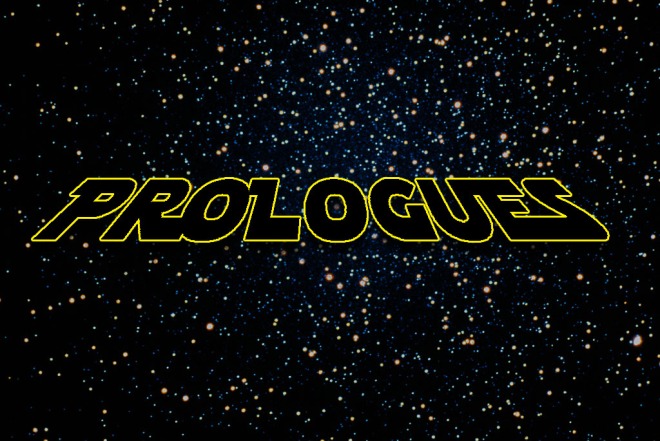 There’s an ongoing debate about prologues. Do you need them? Are they superfluous? Do they set up the story, or should you cut ‘em and get to chapter one already?
There’s an ongoing debate about prologues. Do you need them? Are they superfluous? Do they set up the story, or should you cut ‘em and get to chapter one already?
Plenty of opinions exist, and many opinions have to do with taste. So, before we jump on the “prologues never contribute to the story” bandwagon, I think the first step is to identify what kind of prologue one is writing and the objective of that prologue. We need to know what we’re writing and why, before we let the opinions of what’s “in vogue” influence our writing decisions.
Let’s take a look at four different kinds of prologues.
1) Future Protagonist
This prologue is written in the same voice and style as the main story and from the POV of the same protagonist. When done really well, this kind of prologue changes everything the reader thought. As the reader continues with the story, there’s a point when he will come to understand why the prologue was included. When this reason becomes clear, the reader’s perspective of the story undergoes some kind of change. The reader has an “Ah-ha!” moment. An example of this type of prologue can be found in Unleaving by Joan Paton Walsh.
2) Past Protagonist
Something happened to the protagonist in the past that the reader has to know. Batman’s back story is an example of this. You have to know that his parents were murdered to understand the story and his motivations. This type of prologue usually includes a strong emotional event that starts off the story. Examples of this type of prologue: Pixar’s Up, The Scorpio Races, Smoke and Bone, and Batman.
3) Different Point of View
This prologue is not told from the POV of the protagonist. In this case, the writer has to justify this switch; the relevance MUST be made clear and the pay off has to be worth the disruption of the narrative voice. A successful example of this would be Boy in the Burning House by Tim Wynne-Jones.
4) Background Prologue
This is the kind of prologue that gives prologues a bad wrap. This prologue somehow explains setting and back story. But It can also be a “bit of a trudge.” The writer has to be careful to make sure that the information shared in a background prologue is relevant to the story. It’s not an excuse to share exposition, which is often found in science fiction and fantasy novels that start with trudging prologues. This information has to be truly necessary.
A spin-off of this type of prologue is the background montage, which in effect, is a back story prologue in a film. You see these in movies and television shows like: The Fellowship of the Ring, The Hobbit, Amile, Pushing Daises, and Maleficent. This technique is often more successful in film due to the short time frame. Where as, an author has more time and opportunity to share back story and exposition in a book. The film viewer tends to be more forgiving of a background montage than the reader is of a background prologue.
Looking for more resources on prologues? Try these:
- When to Use a Prologue and How to Write One by Marg McAlister
- The Seven Deadly Sins of Prologues by Kristen Lamb
- Once Before A Time: Prologues Part 1 and Part 2 by Therese Walsh
- Why Prologues Often Don’t Work by Kristen Nelson



Thanks for this. I’ve written a prologue. Your advice will be useful in making my final decision whether I will use it or not. :)
Reblogged this on kyrosmagica and commented:
Reblogged from Ingrid’s Notes. Prologues, to keep or not?